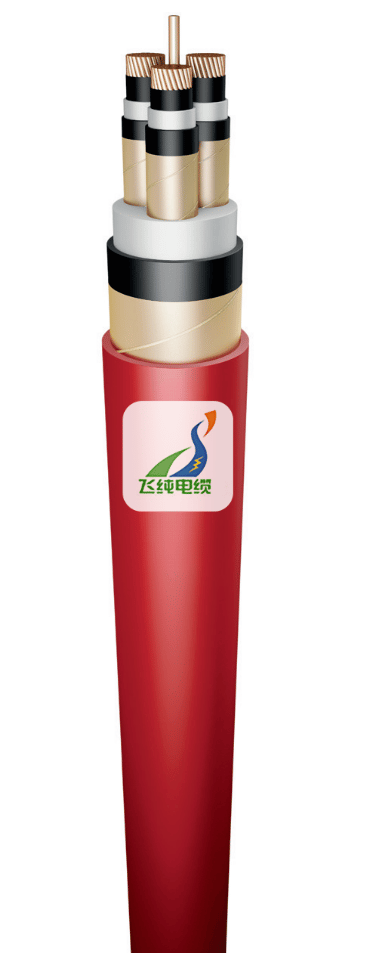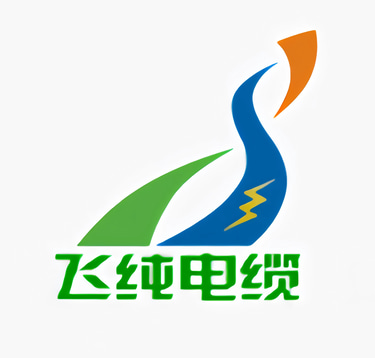Type YHKGXSekyn 3.6/6 kV Screened mining cables
Individually shielded power cable, copper conductor with cross-linked polyethylene insulation, covered with PVC sheath, with overall shield, covered with flame retardant PVC sheath


These are specially designed, screened power cables for underground mining applications with a rated voltage up to 6 kV.
They meet strict safety and performance standards for use in both methane and non-methane mining environments, including hazardous areas prone to methane or coal-dust explosions.
Cable Construction
Conductor:
Made of copper consisting of round, multi-stranded, compacted wires (Class 2 per EN 60228).
Insulation:
Cross-linked polyethylene (XLPE), type DIX 3 (according to PN-HD 620 S1:2002).
The insulation is a natural (clear) color.
Individual Screening:
Each conductor is wrapped with a conductive tape system. This may combine a conductive tape (copper or conductive polyethylene) with a copper tape layer.
Core Arrangement:
The active conductors are twisted around a central element (using either copper wires or strands).
Filler:
Filled with unvulcanized rubber or a tire-derived polymer to maintain the cable’s shape.
Inner Sheath:
Made of PVC (type DMV 31 as per PN-HD 620 S1:2002).
Overall Shield:
A layer of copper tape is wrapped around the entire cable.
Outer Sheath:
A flame-retardant PVC layer (also DMV 31 type) in red, providing additional mechanical and fire protection.
Technical Characteristics
Temperature Ratings:
Operating (Conductor) Temperature: Up to +90°C
Short-Circuit Temperature: Up to +250°C
Ambient Installation Temperature: Down to –30°C (for permanently installed cables)
Laying Temperature (without heating): Down to –50°C
Bending Radius:
Minimum bending radius is 12 times the cable’s overall diameter.
Test Voltage:
Rated at 15 kV AC (applied for 5 minutes at 50 Hz).
Flame Propagation:
Complies with IEC 60332-1-2 and IEC 60332-3-24 standards.
Mechanical Strength:
Maximum pulling force is defined as 50 times the sum of the conductor cross-sectional areas (in mm²).
Packaging and Application
Packaging:
Standard lengths are 500 or 1000 meters per drum. Custom lengths and packaging options are available.
Application:
Intended for underground electrical networks in mining plants where the voltage does not exceed 6 kV.
Suitable for both methane and non-methane areas in mining works classified under hazard levels “a”, “b”, and “c” (explosion risk areas).
Cable Sizes and Electrical Parameters
Manufactured in various sizes, typical examples include:
Example – 3×25/25 Cable:
Conductors: 3 conductors, each with a nominal cross-section of 25 mm²
Insulation Thickness: 2.5 mm
Inner Sheath Thickness: 1.4 mm
Screen Thickness: 2.5 mm
Approximate Overall Diameter: 40.4 mm
Weight: ~2763 kg/km
Maximum Conductor Resistance: 0.727 Ω/km
Other sizes (3×35/25, 3×50/25, …, 3×240/30) have corresponding dimensions, weights, and resistance values as specified in the manufacturer’s tables.
Additionally, a table provides the current carrying capacity (ampacity), inductance, and reactance per kilometer for various conductor sizes. For instance:
A 25 mm² conductor has:
Ampacity: 146 A (at 25°C ambient temperature)
Inductance: 0.32 mH/km
Reactance: 0.101 Ω/km
Correction Factors for Installation
Parallel Cable Arrangements:
When cables are installed one above the other on the same support, the current capacity must be reduced:
1 cable: factor 1.00
2 cables: factor 0.93
3 cables: factor 0.90
6 cables: factor 0.87
9 cables: factor 0.86
Ambient Temperature Adjustments:
For ambient temperatures above 25°C (for cables rated with a long-term operating temperature of 90°C), additional correction factors apply:
30°C: 0.96
35°C: 0.92
40°C: 0.88
45°C: 0.83
50°C: 0.78
55°C: 0.73
Certifications
EMAG Certificate:
Operating range noted from –5°C to +90°C.
RoHS Compliant:
Meets RoHS53 standards.

Frequently Asked Questions (FAQ)
Q: What is the rated voltage of these mining cables?
A: The cables are designed for applications with nominal voltages up to 6 kV, making them ideal for underground mining power distribution.
Q: What materials are used in the cable’s construction?
A: The cable features a copper conductor made of compacted, multi-stranded wires, cross-linked polyethylene (XLPE) insulation, an inner PVC sheath, an individual screening system, an overall copper tape shield, and a flame-retardant PVC outer sheath.
Q: How do these cables meet the specific needs of mining environments?
A: They are engineered to withstand harsh underground conditions including mechanical stress, fire hazards, and the presence of explosive gases. Their construction complies with stringent mining standards for both methane and non-methane areas.
Q: Which standards and certifications do these cables meet?
A: The cables conform to standards such as EN 60228, PN-HD 620 S1:2002 for insulation and sheathing, and IEC 60332-1-2/IEC 60332-3-24 for flame propagation. They are also RoHS compliant and certified under EMAG.
Q: What is the maximum operating temperature of these cables?
A: The cable conductors are rated for continuous operation up to +90°C, and they can withstand short-circuit conditions reaching up to +250°C.
Q: Are these cables suitable for hazardous mining areas?
A: Yes, they are specifically designed for use in underground mining installations, including areas with methane and coal dust explosion risks, categorized under hazard classes “a”, “b”, and “c.”
Q: What role does the individual screening play in the cable design?
A: The individual screening, provided by a combination of conductive tape and copper, ensures electromagnetic compatibility, minimizes interference, and enhances the cable’s overall safety in explosive mining environments.
Q: How is the cable protected against fire and flame spread?
A: The flame-retardant PVC outer sheath, combined with the overall design, meets IEC flame propagation standards, reducing the risk of fire spread in critical mining applications.
Q: What are the mechanical characteristics of these cables?
A: They feature a robust construction with a minimum bending radius of 12 times the cable’s overall diameter, and they are built to withstand high mechanical stresses, which is crucial for installation in mining environments.
Q: How are these cables packaged and can custom lengths be ordered?
A: The standard packaging is available in drums of 500 or 1000 meters. Custom lengths and packaging options can be provided to suit specific project requirements.
Q: How do ambient temperature and cable arrangement affect the cable’s current-carrying capacity?
A: The cables are rated with specific current capacities that may need correction factors when installed in parallel or in ambient temperatures above 25°C. Tables of correction factors ensure safe and effective operation under varying conditions.
Q: What maintenance or installation considerations should be observed in mining applications?
A: Installers must observe the recommended minimum bending radius, use the appropriate correction factors for cable grouping and ambient temperature, and ensure proper routing to prevent mechanical damage. Regular inspections are also recommended to maintain optimal performance in harsh mining environments.






Type YHKGXSekyn 3.6/6 kV Screened mining cables
Type YHKGXSekyn 3.6/6 kV Screened Mining Cable—designed for the demanding conditions of underground mining. This robust cable features a copper, multi-stranded conductor insulated with cross-linked polyethylene (XLPE) and protected by a flame-retardant PVC outer sheath. Each conductor is individually screened with conductive tape and backed by an overall copper tape shield, ensuring excellent electromagnetic compatibility and safety in hazardous environments such as methane and coal-dust areas. Engineered to operate reliably up to 6 kV and withstand high temperatures and mechanical stresses, these cables meet international standards and are available in standard lengths of 500 or 1000 meters, with custom options available to suit your project needs.
6/30/20215 min read
